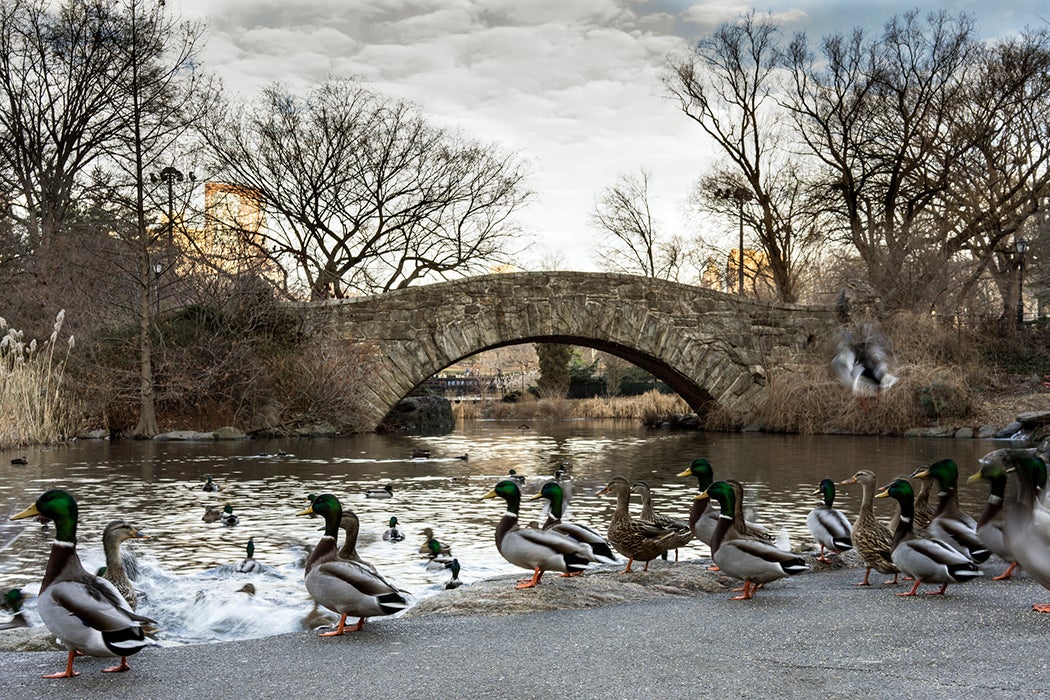As the temperature drops in the Northern hemisphere, most birds begin migrating south to warmer climes. Any elementary school student can tell you that birds leave cold climates in the fall and return in time for the spring breeding season, in order to take advantage of seasonal abundance in temperate areas while avoiding the harsh winters. The tradeoffs seem to exceed the risks and high energetic costs of taking this long journey every single year. But for some birds in the city there’s a different approach.
Cities can host surprisingly diverse bird species, apart from the ubiquitous pigeons and sparrows. This is especially true during migration season, when parks and urban woodlands provide a convenient place to stop when flying over developed country. New York City’s Central Park is famous as a place to observe migrant birds.
In the countryside, as leaves start to fall, resources become scarce and temperatures become uncomfortable. In the city, humans fill the gap. Garbage, picnic leftovers, and bird feeders all provide resources for birds to live on year round. The heat island effect in many cities also ensures warmer winter temperatures. The result is that more and more bird populations in urban areas are either migrating later or not migrating at all.
To facilitate their newly sedentary lifestyle, birds are adapting in a variety of ways. Some pre-migratory behaviors are reduced, especially in the fall. The changes go beyond altered behavior; there are concrete physical changes as well. Migrating birds accumulate large amounts of fat that they need for sustenance during the trip; male urban birds deposit less than their rural counterparts. Furthermore, the males that are least prepared to migrate became reproductively capable earlier in the year, allowing for a longer breeding season. This might give them an advantage in mating, as they can start mating before their migratory counterparts arrive. There is some indication that these traits may be inherited, so perhaps eventually new, urban species of common birds will develop.
The same conditions that make it worthwhile for residents to stay also attract temporary visitors. Rural birds regularly visit the city, but urban natural spaces sometimes provide a place where visiting birds actually spend the winter. A 2006 study in the Columbus, Ohio area found that forest corridors near urban development actually supported higher numbers and more species of overwintering birds than nearby rural areas; warmer local temperatures and increased food availability from bird feeders was the probable reason. One day, while some birds may not migrate at all, others may decide not to migrate as far.
Surely, these changes wouldn’t be occurring without human influence, and in most cases human influence has a negative impact on wildlife. If we’re going to pave the world, however, it’s good that some organisms are finding a way to keep up.







